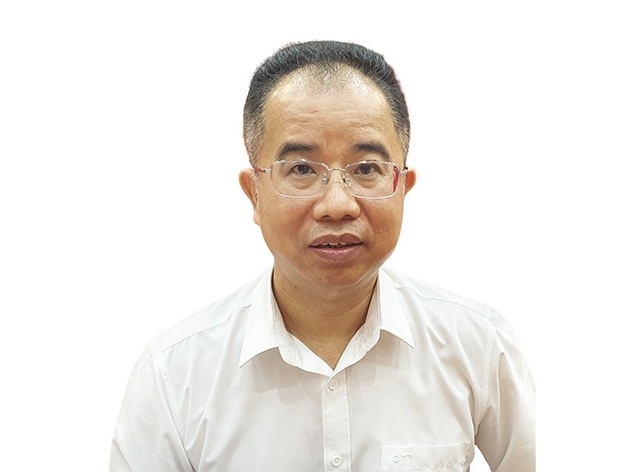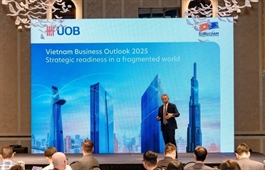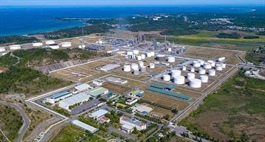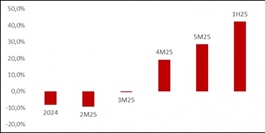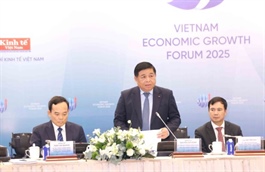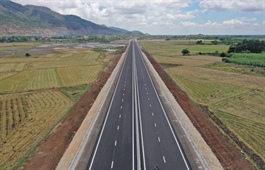Inflation pressure in H2 driven by exchange rates and credit, expert warns
Inflation pressure in H2 driven by exchange rates and credit, expert warns
Escalating trade tensions stemming from US tariff policies are likely to slow the global economy, posing serious risks for Việt Nam’s export sector and overall production

Delegates at the conference in Hà Nội on Wednesday. — Photo hanoimoi.vn |
Despite the average inflation rate for 2025 being forecasted at around 3.4 per cent, it is crucial to closely monitor inflationary pressures stemming from exchange rates and credit growth to draw up effective inflation control policies, said Nguyễn Đức Độ, deputy director of the Institute of Economics and Finance under the Ministry of Finance.
Speaking at a conference in Hà Nội on Wednesday, Độ said the USD/VND exchange rate rose significantly in the first half of 2025, despite the US dollar’s general depreciation trend in the international market. This divergence contrasts with typical patterns, such as in the latter half of 2024, when the US dollar index (DXY) and the USD/VND exchange rate moved in tandem.
Độ explained that the unusual movement in 2025 was mainly driven by the US policy of increasing import tariffs, which raised concerns over potential negative impacts on Việt Nam’s exports and consequently reduced USD supply. Furthermore, the new US tariff policy is expected to gradually lower inflation in the US, prompting the Federal Reserve to maintain high interest rates for a longer duration.
The resulting wide interest rate gap between the USD and VND continues to exert upward pressure on the exchange rate. With ongoing uncertainty surrounding US tariff policies and higher import tax rates on Vietnamese goods, exports to the US are expected to face significant challenges in the second half of 2025, increasing pressure on both exchange rates and inflation.
Meawhile, with a credit growth target of 16 per cent for 2025 and the Government urging the State Bank of Vietnam (SBV) to keep interest rates low to support an 8 per cent GDP growth, the money supply is expected to rise faster than nominal GDP, potentially putting upward pressure on prices in the near future, Độ said.
Several factors, however, are expected to help curb inflation. Export challenges in the US market, driven by tariffs, and in other markets due to sluggish economic growth, are likely to increase domestic supply, easing inflationary pressure.
Additionally, prices of basic goods are trending downward amid forecasts of a significant global economic slowdown caused by ongoing tariff measures, he noted.
H2 inflation forecast
Độ predicted that inflationary pressure in the second half of 2025 will remain moderate, as factors driving prices up and down are expected to balance each other out. Assuming the CPI rises by an average of 0.27 per cent per month, matching the average increase in the last six months of the 2015-24 period, the average inflation rate for 2025 is forecasted at 3.4 per cent.
He added that if trade tensions between the US and its major partners persist, triggering a global economic recession and a sharp decline in basic goods prices, the average inflation rate for 2025 could fall to around 3 per cent.
According to Độ, 2025 is likely to mark the 11th consecutive year that Việt Nam successfully keeps inflation below 4 per cent.
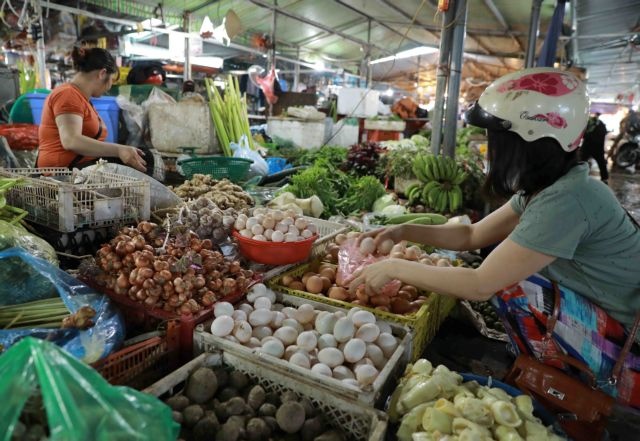
Delegates at the conference in Hà Nội on Wednesday. — Photo hanoimoi.vn |
Citing the latest data from the National Statistics Office, Nguyễn Đào Tùng, President of the Academy of Finance, said Việt Nam’s economy maintained a strong recovery in the first half of 2025, gaining momentum from the second quarter onward.
GDP growth in Q2 reached 7.96 per cent year-on-year, bringing the growth rate for the first six months to 7.52 pẻ cent - the highest first-half performance since 2011.
Unlike the previous year, when exports played a dominant role, the strong growth in H1 2025 was mainly fuelled by domestic consumption, which rose 7.95 per cent, and investment, up 7.98 per cent.
Tùng noted that this robust performance reflects the impact of expansionary fiscal and monetary policies, including tax exemptions and reductions, increased public investment, lower interest rates, expanded credit limits, and flexible exchange rate management.
He said these measures have truly served as a support pillar for Vietnamese enterprises amid ongoing global economic uncertainties.
Challenges lie ahead
Despite the positive economic performance in H1, significant challenges are anticipated in the second half of the year, Tùng cautioned.
He noted that escalating trade tensions stemming from US tariff policies are likely to slow the global economy, posing serious risks for Việt Nam’s export sector and overall production. Domestically, the sharp rise in exchange rates during the first half may continue to exert upward pressure on prices.
A representative from the Price Management Department of the Ministry of Finance warned that the second half of 2025 will face numerous potential price pressures. This calls for flexible, timely and effective price management to maintain inflation control while vigorously mobilising resources to achieve maximum economic growth.
At the same time, efforts must continue to support the removal of obstacles for production, business, and people’s livelihoods. The roadmap for adjusting market prices of public services and state-managed goods should also be implemented at levels and paces suitable for the development of the consumer price index.
- 08:53 10/07/2025


